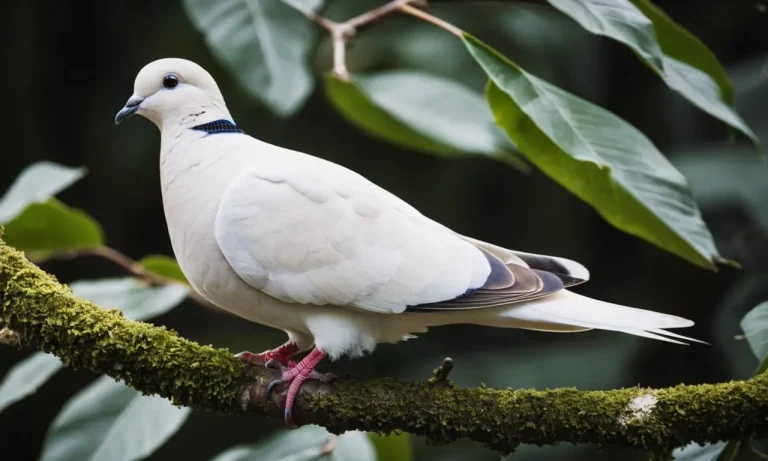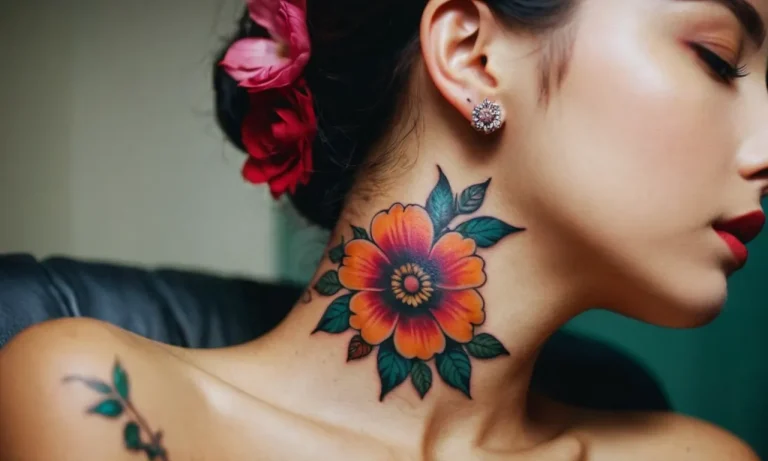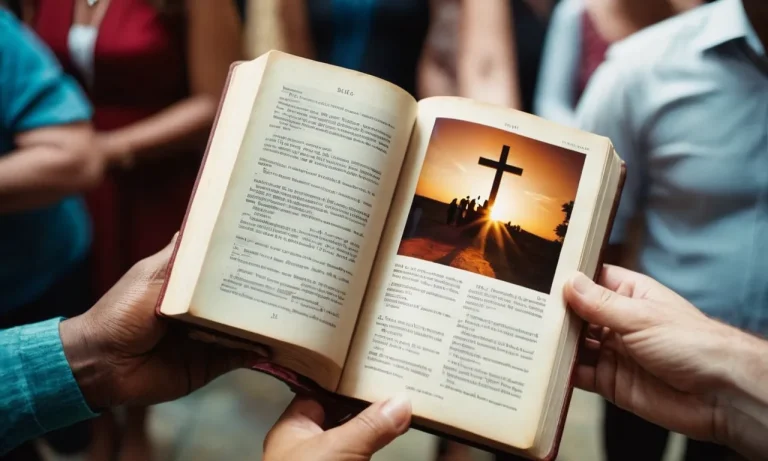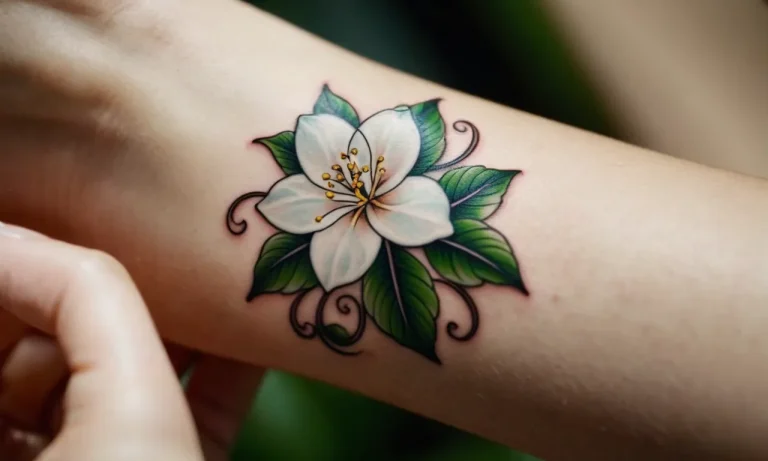Indigo Meaning: Exploring The Depths Of This Captivating Color
In the vast spectrum of colors, indigo stands out as a hue that has captivated humanity for centuries. Its rich, deep tones evoke a sense of mystery and intrigue, making it a color that has been revered and celebrated across various cultures and traditions.
If you’re short on time, here’s a quick answer to your question: Indigo is a deep, rich blue color that has been associated with various symbolic meanings, including spirituality, intuition, and introspection.
It is a color that has played a significant role in art, literature, and cultural traditions throughout history.
In this comprehensive article, we will delve into the fascinating world of indigo, exploring its origins, symbolism, cultural significance, and its impact on various aspects of human life. From its use in ancient dyeing techniques to its representation in modern art and design, we will uncover the captivating stories and meanings behind this enigmatic hue.
The Origins and History of Indigo
Indigo, a mesmerizing hue that has captivated cultures across the globe for centuries, has a rich and fascinating history. Its journey from a humble plant to a coveted pigment is one that spans continents and civilizations, weaving together tales of ancient dyeing techniques, global trade routes, and even rebellions.
The Natural Dye: Indigo’s Journey from Plant to Pigment
The origins of indigo can be traced back to the indigofera plant, a member of the legume family. For thousands of years, civilizations in Asia, Africa, and the Americas have harnessed the power of this plant to create a vibrant and long-lasting blue dye.
The process of extracting the pigment from the plant’s leaves is a labor-intensive one, involving fermentation, oxygenation, and careful drying. The resulting indigo paste, known as “blue gold,” was a highly prized commodity, sought after for its ability to produce rich, deep shades of blue.
Ancient Indigo Dyeing Techniques and Trade Routes
Indigo’s allure transcended borders, and its trade routes crisscrossed the ancient world. From the indigo-dyed textiles of ancient Egypt to the intricate batik patterns of Indonesia, the art of indigo dyeing has been passed down through generations, each culture adding its own unique twist.
In India, the city of Jaipur became renowned for its indigo-dyed fabrics, while in Japan, the traditional aizome (indigo dyeing) techniques have been elevated to an art form. 😍
The global demand for indigo fueled a thriving trade network, with merchants traversing the Silk Road and maritime routes to transport this precious commodity. In the 16th century, the indigo trade was worth an estimated 750,000 pounds per year, according to historical records. The quest for indigo even led to the colonization of Central America, where the Spanish established indigo plantations to meet the insatiable European demand.
The Indigo Rebellion and Its Impact on Global Trade
However, the indigo trade was not without its controversies. In the late 18th century, the Indigo Rebellion erupted in Bengal, India, as local farmers revolted against the oppressive policies of the British East India Company.
This uprising, fueled by resentment over the forced cultivation of indigo and the exploitation of farmers, had far-reaching consequences. It not only challenged British colonial rule but also sparked a shift in the global indigo market, with synthetic alternatives eventually replacing the natural dye.
Despite the rise of synthetic indigo, the allure of the natural dye persists. Today, artisans and fashion designers alike are rediscovering the beauty and sustainability of indigo, reviving ancient techniques and embracing the rich cultural heritage that this captivating color represents. 👏
Symbolic Meanings and Cultural Significance
Indigo in Spiritual and Religious Traditions
Indigo, a deep and mysterious shade of blue, has long been revered in various spiritual and religious traditions across the globe. In Hinduism, indigo is associated with the sixth chakra, also known as the third eye, representing intuition, wisdom, and spiritual enlightenment.
Yogajournal.com explains that the indigo color is believed to promote inner peace, clarity, and connection with the divine.
In Christianity, indigo is often linked to the symbolism of royalty and divinity. The robe worn by Christ during his crucifixion is sometimes depicted as indigo, representing his divine nature and sacrifice.
Additionally, indigo is associated with the Virgin Mary, symbolizing her purity, humility, and devotion.
In Buddhism, indigo is considered a color of detachment and spiritual awakening. It is believed to help individuals let go of material attachments and embrace a more enlightened state of being. According to BuddhistDoor.net, indigo is often used in Buddhist art and iconography, particularly in the depiction of the Buddha’s robes or the aura surrounding enlightened beings.
Indigo Children: The Concept and Its Implications
The concept of “Indigo Children” emerged in the late 20th century, referring to a group of individuals believed to possess unique spiritual and intuitive abilities. Proponents of this idea claim that these children have an indigo-colored aura, which symbolizes their heightened awareness, creativity, and sensitivity.
😊
While the scientific validity of this concept is debated, it has gained significant attention and sparked discussions about the potential for human evolution and the role of spirituality in modern society.
According to PsychologyToday.com, some experts suggest that the “Indigo Children” label may be a way to explain children who exhibit traits like nonconformity, high intelligence, and emotional sensitivity.
Indigo in Art and Literature: Exploring Artistic Expressions
Indigo has long been a source of inspiration for artists and writers, capturing the depths of human emotion and the mysteries of the natural world. In literature, indigo has been used to evoke a sense of melancholy, introspection, and contemplation.
For example, in the novel “The Indigo Spell” by Richelle Mead, the indigo color symbolizes the protagonist’s journey of self-discovery and spiritual awakening.
In the visual arts, indigo has been a beloved hue for centuries. From the rich indigo-dyed textiles of ancient civilizations to the mesmerizing indigo landscapes of contemporary painters, this color has captivated artists with its depth and versatility.
According to Tate.org.uk, indigo was a highly prized pigment in the past, and its use in artworks often signified wealth and status.
Indigo has also found its way into modern design and fashion, with its calming and sophisticated presence adorning interiors, clothing, and accessories. Its ability to evoke a sense of tranquility and depth has made it a popular choice for those seeking a touch of elegance and serenity in their surroundings.
Indigo in Fashion and Design
The Enduring Popularity of Indigo Denim
Indigo, a deep and rich shade of blue, has long been a staple in the fashion world, particularly in the realm of denim. The enduring popularity of indigo denim can be traced back to the late 19th century when Levi Strauss & Co. introduced their iconic blue jeans, dyed with natural indigo.
Today, indigo denim remains a wardrobe essential, transcending trends and seasons. According to a report by Statista, the global denim market was valued at a staggering $57.3 billion in 2022, a testament to the widespread appeal of this versatile fabric.
Indigo denim’s durability, comfort, and timeless appeal have cemented its place in fashion, making it a go-to choice for casual and stylish outfits.
Indigo in Interior Design: Creating Calming Spaces
Beyond fashion, indigo has also found its way into the realm of interior design, where it is prized for its ability to create calming and serene spaces. The deep, rich hue of indigo is known to have a soothing effect on the mind and body, making it an excellent choice for bedrooms, living rooms, and other areas where relaxation is desired.
Pantone’s Color of the Year 2022, Very Peri, a blend of indigo and periwinkle, further solidified indigo’s place in the world of interior design. According to a survey by Houzz, 35% of homeowners prefer using blue hues, including indigo, in their homes.
What’s more, indigo pairs beautifully with other colors like white, gray, and earthy tones, making it a versatile choice for creating harmonious and inviting spaces.
Indigo in Branding and Marketing: Conveying Trust and Stability
In the world of branding and marketing, indigo has become a go-to color for conveying a sense of trust, stability, and professionalism. Companies like Gap, PayPal, and Barclays Bank have all incorporated indigo into their branding, leveraging its powerful associations with confidence and reliability.
According to a study by Emerald Publishing, blue hues like indigo are perceived as trustworthy, secure, and dependable, making them an excellent choice for financial institutions and companies that deal with sensitive information.
In a world where consumer trust is paramount, indigo’s ability to convey stability and credibility has made it a valuable asset in the marketing toolbox.
Psychological and Emotional Associations
The Calming and Introspective Nature of Indigo
Indigo, a deep and mysterious hue, is often associated with a sense of tranquility and introspection. This captivating color has long been recognized for its ability to promote relaxation and inner reflection.
According to a study by Color Psychology, exposure to indigo can lower blood pressure and heart rate, inducing a state of calmness and serenity. Its cool and soothing tones are believed to have a therapeutic effect on the mind and body, making it an ideal choice for meditation spaces, spas, and areas designed for relaxation.
Beyond its calming properties, indigo is also said to encourage introspection and self-awareness. Its depth and richness invite us to delve into our innermost thoughts and emotions, fostering a deeper understanding of ourselves and our place in the world. This introspective quality has made indigo a favorite among philosophers, poets, and deep thinkers throughout history, who have found inspiration in its enigmatic allure.
Indigo and Creativity: Unlocking Artistic Expression
For artists and creatives, indigo holds a special allure. This captivating hue is often associated with imagination, intuition, and artistic expression. According to a study conducted by Art Therapy Blog, individuals exposed to indigo reported increased levels of creativity and a heightened sense of inspiration.
😍 The color’s mysterious and ethereal qualities seem to unlock the doors to the subconscious mind, allowing artists to tap into their deepest wells of creativity.
Furthermore, indigo is believed to enhance problem-solving abilities and foster innovative thinking. Its unique blend of blue and violet hues stimulates both the logical and intuitive sides of the brain, enabling a harmonious balance between analytical and creative thought processes. This duality makes indigo a powerful tool for artists, writers, musicians, and anyone seeking to unleash their creative potential.
Indigo and Mindfulness: Promoting Inner Peace and Tranquility
In today’s fast-paced world, where stress and anxiety are all too common, indigo offers a refuge of inner peace and tranquility. This soothing color is often associated with mindfulness practices, such as meditation and yoga.
According to a study by Mindful, participants who practiced mindfulness exercises in indigo-hued environments reported feeling more centered, focused, and at ease.
The calming and introspective nature of indigo can help quiet the mind and promote a sense of emotional balance. Its depth and richness invite us to let go of distractions and connect with our inner selves, fostering a heightened state of awareness and presence in the moment. Whether through meditation, yoga, or simply taking a few deep breaths, indigo can be a powerful ally in cultivating mindfulness and finding inner peace amidst the chaos of daily life.
🧘♀️
In essence, indigo is a color that speaks to the depths of the human psyche, offering a gateway to calmness, creativity, and mindfulness. Its captivating allure has inspired artists, philosophers, and seekers of inner peace throughout the ages, making it a truly remarkable and multifaceted hue. 🎉
Indigo in Science and Technology
Indigo in Optics and Spectroscopy
Indigo, a deep and captivating shade of blue, plays a crucial role in the realm of optics and spectroscopy. This color occupies a unique position in the visible spectrum, with a wavelength range of approximately 450-470 nanometers.
In spectroscopy, indigo is used to analyze the composition and properties of various materials by studying the way they interact with light at specific wavelengths. For instance, the indigo region of the spectrum is particularly useful in identifying certain organic compounds and minerals, making it an invaluable tool for researchers in fields like chemistry, materials science, and astronomy.
Moreover, indigo has found applications in the development of advanced optical technologies. Indigo lasers, which emit light in the indigo region, are employed in various scientific and industrial processes, such as optical data storage, high-precision measurements, and medical diagnostics.
According to a study published in the Nature Scientific Reports, indigo lasers have shown promising results in the early detection of certain types of cancer by enabling highly sensitive fluorescence imaging techniques.
Indigo in Biomedical Applications
The unique properties of indigo have also piqued the interest of researchers in the biomedical field. Indigo-based dyes and compounds have demonstrated potential therapeutic applications, particularly in the treatment of certain diseases and conditions.
For instance, a study published in the Journal of Photochemistry and Photobiology B: Biology explored the use of indigo-based photosensitizers for photodynamic therapy, a promising approach for targeting and destroying cancer cells.
Additionally, indigo has shown promising antimicrobial and anti-inflammatory properties, making it a subject of interest in the development of novel treatments for bacterial infections and inflammatory disorders.
According to a report by the Grand View Research, the global indigo dye market is expected to reach $1.2 billion by 2028, driven in part by its applications in the healthcare industry.
Indigo in Sustainable Technologies and Eco-Friendly Practices
In the pursuit of a more sustainable future, indigo has emerged as a valuable ally in eco-friendly technologies and practices. The natural indigo dye, derived from plants like the Indigofera tinctoria, has been used for centuries in textile dyeing and has gained renewed interest due to its environmentally friendly properties.
Unlike synthetic dyes, natural indigo dyes are biodegradable and less harmful to the environment, making them a preferred choice for eco-conscious consumers and manufacturers alike.
Furthermore, indigo has found applications in the development of sustainable energy technologies. For example, researchers are exploring the use of indigo-based dyes in dye-sensitized solar cells, which have the potential to provide a low-cost and environmentally friendly alternative to traditional silicon-based solar cells.
According to a study published in the Journal of Materials Chemistry A, indigo-based dyes have shown promising efficiencies in converting sunlight into electrical energy, paving the way for more sustainable energy solutions.
Conclusion
Indigo, a color that has captivated humanity for centuries, is a hue that holds a multitude of meanings and associations. From its origins as a natural dye to its symbolic significance in various cultures, indigo has woven itself into the fabric of human history and expression.
Throughout this article, we have explored the rich tapestry of indigo, delving into its origins, symbolic meanings, cultural significance, and its impact on various aspects of human life. Whether it’s the calming and introspective nature of indigo in spiritual and artistic realms, or its enduring popularity in fashion and design, this color has left an indelible mark on our collective consciousness.
As we continue to unravel the mysteries and meanings behind indigo, we are reminded of the profound impact that colors can have on our lives. Indigo serves as a testament to the power of hues to evoke emotions, inspire creativity, and connect us to our cultural heritage.
Embrace the depths of indigo, and let its captivating essence enrich your understanding of the world around us.








